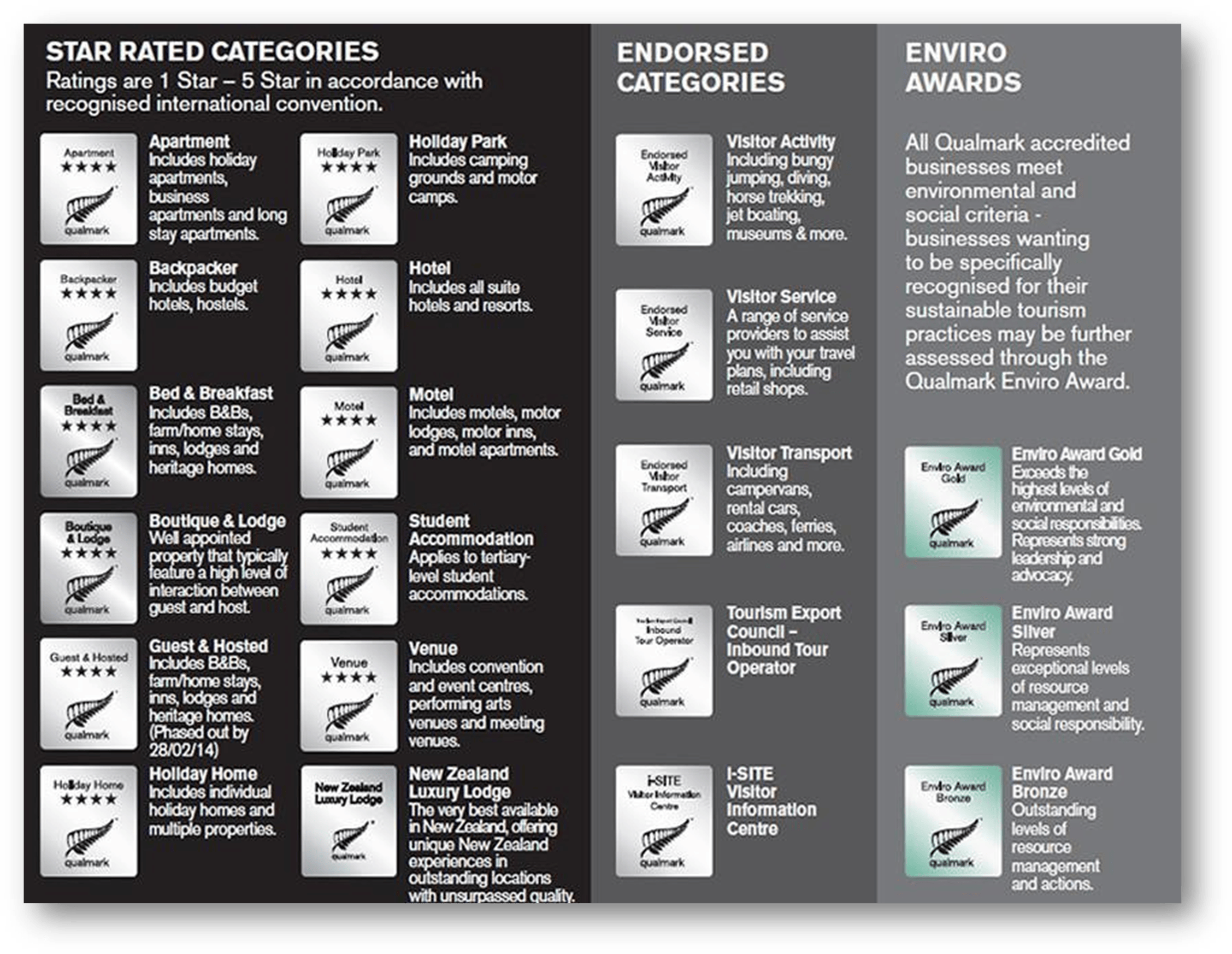Customers have expectations about how they will receive goods or services. If you are going to give a service described as exceptionally good, you need to identify your customers’ expectations and not only meet but exceed them.
As customers ourselves, we would expect:
- Timeliness – we know when we want things to happen
- Quality – we know how good the service should be
- Courtesy – we know how we want to be treated.
Enhancing Customer Service
Your goal should always be:
- To make people want to do business with you
- They will recommend your service to others.
You must excel in what you do to stand out from the rest by:
- Understanding your customers’ needs
- Exceeding your customer's expectations
- Consistently providing exceptional customer care.
To exceed expectations, you must do more than your customer anticipates. In doing so, you will ensure that:
- You use active listening skills to ensure you understand what customers are saying, using good eye contact, positive body language, questioning, and summarising techniques
- Look for clues about what they might not be saying
- Your customer service standard must always be the highest possible to be reliable
- Be consistent with the service you want to give; don’t have good and bad days
- Ensure standards are maintained in the quality of products (food, rooms, tourism experience), service provided, cleanliness, etc.
Learning Activity: The Importance of Customer Service
With a greater understanding of the importance of customer service, write your answers to the following.
- Why is the customer service provided to external customers by you and others important to your employer?
- What might the effects be on your employer’s business if external customers were dissatisfied with the service they received?
- What impression might external customers gain of a company whose employees take great pride in their appearance?
- Why might external customers decide the sort of company you work for based on how you act and appear?
- Why is it important to provide excellent customer service for your internal customers?
- What do we mean when we talk about reliable customer service?
- How can you ensure your customers do not suffer when you have a bad day?
Share your thoughts and post your responses to the Forum, The Importance of Customer Service.
Customer Service and a Quality Experience
Customer service and providing customers with a quality experience are interdependent. Providing a quality experience requires excellent customer service; without it, quality must inevitably suffer.
Each of the key components we have already looked at plays a part in ensuring that the customer’s experience of a company gives them a perception of quality. Without those key components being met, the perception of quality will fail, and the risk of losing reputation, repeat business, and referrals is high. Let’s look at some mechanisms a company can employ to ensure quality.
Tourism 2025
Tourism 2025 is a strategic framework for improving the competitiveness of New Zealand tourism. Tourism 2025 outlines five (5) significant areas or ‘themes’ that have all been identified for their critical importance in improving the competitiveness of New Zealand as a tourism destination. The major themes that Tourism 2025 focuses on are.
- Productivity for profit
- Visitor experience
- Connectivity
- Insight
- Target.
“Visitor experience is one of the key themes, and it’s been identified that we need to ‘drive value through outstanding visitor experience’. Central to this theme was the recognition that we must listen carefully to our visitors, constantly hone our understanding of visitor needs and continuously improve our visitor’s experience”.
Tourism 2025
Explore
Each of the five themes is more detailed on the Tourism 2025 website. Click on the link below and download the Tourism 2025 and Beyond PDF document at the relevant link.
One method used to determine what our visitors want is to use relevant tools to measure visitor satisfaction. Visitors also need to have a means of identifying tourism operations that meet quality criteria that they can rely upon.
This is in large part achieved through the Qualmark accreditation of tourism businesses. Another aspect that relates to this theme is the ability to deliver quality tourism products and world-class customer service thus giving visitors an outstanding visitor experience. All tourism employees should go through customer service training. A need has been identified for training to be at a consistent level and available not just in the main tourism areas, but in the smaller more remote parts of New Zealand as well. There was a strong desire for consistency in the delivery of service throughout New Zealand. This goal has been addressed through the KiwiHost programme and more recently the Kia Ora Mai programme.
Watch the following video
It is about Tourism 2025 and Beyond. (1:15)
Influences on the Experience
The starting expectations critically influence whether a customer leaves with a positive experience. What does the customer expect? What have they been told already, and how will these expectations impact what they receive?
Think about a movie you have seen that had terrific reviews. You go into the movie expecting the best thing ever, and often, you think it was okay but nothing that special.
This is the danger of expectation – the more something is promoted positively, the higher the chance that someone will go away disappointed.
Tourism New Zealand has spent a lot of time and money developing a system to help educate consumers and give them realistic guidelines for the standards they can expect.
Qualmark
Qualmark is New Zealand tourism’s official mark of quality. It is a joint venture of Tourism New Zealand and the New Zealand Automobile Association. Qualmark is run not-for-profit as a service to travellers and the tourism industry.
Qualmark is a licensing system for tourism’s official quality mark, and all accommodation and other tourism businesses, such as activities, attractions, and transport, are eligible to apply.
The Qualmark is an assurance of quality for travellers identifying professional and trustworthy businesses so they can book and buy with confidence.
The idea is that when travellers see the Qualmark “stars”, they will have confidence that the accommodation, attraction, or transport has met a certain standard. Registered Qualmark services are listed on Trip Advisor, for example.
The following infographic details Qualmark categories you may see at specific establishments in New Zealand.

Now Check your knowledge with this interactive exercise

The Visitor Experience Monitor
Tourism New Zealand commissions independent research each year to understand how satisfied international visitors are with New Zealand's experience.
Ensuring international visitors have an enjoyable experience is the key to the future of the tourism industry. Visitors who have the experience of a lifetime while on holiday in New Zealand are more likely to recommend us to other people or return for a second visit themselves.
The visitor experience monitor looks at which aspects of their New Zealand holiday visitors enjoyed the most. We can use this information to improve the experiences and products we offer visitors.
The Visitor Experience Monitor looks at:
- Overall visitor satisfaction
- Accommodation
- Activities
- Competing destinations
- Environment
- i-SITE
- Māori culture
- Planning and information sources
- Transport.
The Customer Experience

So far, we have looked at Customer Service and what we can do in our interactions with our guests. This section will look at some things that make the customer experience. There is more to it than delivering good customer service.
In today’s world, it is no longer enough to do the basics well to be successful. Everyone is trying to do the basics, and when enough people are doing it right, the successful company needs to think about what else they could do to make their customers’ experiences more memorable. To stand out from the crowd today, the new goal is to exceed customers’ expectations, resulting in greater customer loyalty and advocacy.
Learning Activity
Customer Service Interactions
Answer the following questions as fully as you can. You may all have similar or quite different experiences. Each is valid.
- Think about the customer service interactions you receive on a good day at a fast-food establishment. What do you encounter?
- Now think about a local café/restaurant and the interaction you have received there.
- Did these encounters (a & b) leave you thinking you had a good experience? Probably not. You would have remembered if the service was terrible, but perhaps something else made it an enjoyable experience. Now, answer these follow-up questions.
- Consider the local café. What stands out for you? What made your experience a good or bad one?
- Would you go back to a particular café or fast-food restaurant? What are the reasons for your decision?
Post your responses to these questions and post them to the Forum, Customer Service Interactions.
Remember: The entire experience needs to be considered–all parts of the process that involve interaction or connection with the customer. We call these “touch points”. Spend a moment categorising the key reasons you return to a particular company. It’s still all customer service.
Watch the following video
It is about customer service versus customer experience. (15:22)
Take notes on how the presenter describes the differences between customer service and customer experience. The video breaks down customer service into six (6) key areas – the main reasons people do business there.
Learning Activity
The Hotel Industry
Read the job description below for a Hotel Guest Relations Officer and highlight anything you consider connected to delivering an 'experience’. Copy this text and highlight your chosen phrases in the Forum, The Hotel Industry.
Job Description
A hotel Guest Relations Officer (GRO) is at the forefront of customer service. He or she is one of the first hotel workers to greet guests as they arrive. The GRO provides hotel guests with above-and-beyond service to ensure their experience will be worth remembering. The position ensures that guests are happy from the moment they enter the hotel until they leave. Sometimes, he or she continues to provide superior customer service after the guests are long gone.
Duties and responsibilities.
A guest relations officer gives each guest a personal recognition. This could be in the form of memorising the names of the customers or addressing them with the correct salutations, such as "Miss", "Sir", "Ma'am", or "Senator." Although a GRO would not be able to memorise the names of all the hotel guests at a given time, they should remember a hotel guest's name after two transactions. A GRO meets and greets arriving guests and bids them farewell as they leave. He or she reviews the arrival list daily and assists in preparing and distributing welcome amenities. GROs escort VIPs to their rooms and check them in before their arrival. A GRO attends promptly to customers' inquiries and assists them with their needs. Regarding complaints, they allow guests to speak first and then provide solutions to their issues or concerns. The GRO logs the day's activities in a logbook to ensure that the next person on duty knows everything that needs extra attention. The GRO should always be present in the hotel lobby and maintain proper decorum. They should respond quickly to calls in case he or she is not at his or her post. He or she also promotes all the facilities of the hotel and knows the surrounding areas when asked for directions. A GRO should also know the best places to tour, shop, and dine.
Source: HCareers
At the Hilton Hotel in Queenstown, the GRO is responsible for checking any VIP arrivals and ensuring the room is set up to their requirements before arrival. For example, if the guest records show them to be a Diet Coke drinker, the GRO will ensure the mini bar fridge in the room is stocked with extra Diet Coke, not regular Coke!
Customer service is essential, but it involves being reactive – dealing with something appropriately when it comes up, meeting expectations, saying things like “thank you, please, I’m sorry”. A formulaic approach, no more or less than what is required.
Customer experience is being proactive. Doing something above and beyond, offering something without being asked, and recognising a customer's value. It leaves the customer thinking: "Wow – that was amazing; I am going there again". The customer shifts to being a VIP.
Some examples of how the customer experience might look for tourism are essential. A travel agent could do the following to take customer service to the next level:
- Hand deliver a quote
- Offer to order the travel book for them
- Offer to stay open late or come in early to meet a client’s schedule
- Ring them up after a holiday before they ring you
- Arranging a bottle of wine/champagne to be at the hotel for special occasions
- Anything proactive – offering or doing without being required.
What is Total Customer Experience?
Total customer experience describes a customer's relationship with a business. It comprises all the customer's interactions with the business, from when the customer first contacted the company to the present day – this is the visitor experience cycle.
To deliver a world-class visitor experience, focusing on each component of the visitor experience cycle is critical. The various stages of the cycle should be consciously evaluated to maximise the potential to impact a visit positively. Every element in every step of the process can contribute positively or negatively to a visitor’s experience.
Source: Setting the Stage for Visitor Experiences in Canada’s National Heritage Places, Ed Jager and Annique Sanche
Important
The visitor experience cycle is divided into seven stages:
- Wishing - the potential visitor is aware of and wants to experience the products and services, the opportunities available and the resulting experiences they may enjoy
- Planning - the potential visitor decides on the destination that best meets their interests, needs and expectations. The visitor needs to have access to full details surrounding the potential visit
- Travelling - the potential visitor is going to a destination. Their journey needs to be straightforward and clear
- Arriving - the visitor is welcomed and receives orientation information and details regarding the products and services
- Visiting - the visitor participates in, enjoys, and learns from the products, services and facilities
- Leaving - the visitor had an enjoyable, meaningful, satisfying, safe and fun visit
- Remembering - the visitor recalls and shares the details of their visit through pictures, stories and souvenirs with friends and family, in person and through social media.
Source: Tourism 2025
Learning Activity
Tourism Business Owner
Imagine you are a tourism business owner. How could you influence each of the seven stages mentioned above to ensure the experience was terrific?
Be creative in your answers.
Post your responses to the Forum, Tourism Business Owner.
Managing Total Customer Experience

Image source: https://www.sfgate.com/disneyland/article/Disneyland-s-Pirates-of-the-Caribbean-ride-once-16056619.php
Total customer experience summarises your customers' opinions of your company and products. If they are happy, they will tell their friends and buy again. If they are unhappy, they will also tell their friends, and you will unlikely receive future business from them or those friends.
With customers looking to spend less on travel and doing more research when choosing which trips to go on, travel, tourism, and hospitality brands need to double down on customer experience to ensure they're the brand chosen when customers do spend their money. High-quality experiences make people happy and often feature interactive and interpersonal experiences, sensory experiences (touch, taste, smell, etc.) and humorous, fun or exciting activities and people (guides, staff).
Think back to the component where we looked at Walt Disney World in Module 1. Some of the things that Disney do that help create the "Disney experience" are as follows:
- Cast members “play” parts
- There is music in the parks
- The décor is linked to a theme, giving the parks the ‘wow’ factor
- Above and beyond – the parks do things for guests they weren’t expecting, for example, replacing ice creams, personalised touches, using children’s first names
- Rides linking to stories or movies – it’s not just a boat ride; it’s a Pirates of the Caribbean boat ride.
As shown above, Disney does the “detail” well.

The COVID-19 pandemic has had an irreversible impact on how the world does business.Anna Murphy, Editor of Intercom (May 25, 2021)
Explore
Click on this link and read the Intercom article for yourself.
https://www.intercom.com/blog/forrester-research-how-the-pandemic-changed-customer-support/
Important
There was a survey commissioned by KPMG called ‘Tomorrow’s Experience Today 2018 KPMG New Zealand Customer Experience Excellence Report’. This report details several Kiwi businesses, including a case study on Air New Zealand.
Reflection
The report states, "Air New Zealand is held in high regard by Kiwis”. Is this still the case? Wasn’t there an issue with poor customer service, in terms of customers desperately trying to contact the airline’s call centre to change their booking or request refunds, for example? How would this impact their brand ranking today?
Is their purpose still true? For example, the report states, “Our purpose is bigger than flying people from point A to point B – it’s about connecting New Zealand with the world.” How has the global pandemic changed this for Air New Zealand?
Evaluate Customer Service in A Travel or Tourism Workplace

Image Source: https://thehighlife.com.au/singapore-airlines-brussels/
Case Study
The following case study looks at Singapore Airlines and how it became known for excellent customer service. Read through the following information and then summarise the strategies Singapore Airlines used to ensure they delivered excellent customer service and became renowned for it.
Singapore Airlines (SIA)
This airline holds the enviable position as a world leader in customer service in the airline industry. This case discusses how SIA differentiated itself from other airlines based on superior flight and ground customer service. This case emphasises SIA’s efforts to develop customer perception as the world’s most preferred airline.
Singapore Airlines has become a role model for ‘service’ in the airline industry. From the beginning, it has focused on customer satisfaction as its highest priority. It constantly brought innovations in its service to retain existing clients and attract new customers. SIA did not want to satisfy its customers but to delight them.
Challenge:
Joseph Pillay, Chairman of SIA in 1989, stated, “The airline industry is, by its very nature, a service industry. In a free market, the quality of service largely dictates the success or failure it provides”. His goal from that day forward was “not to be A world leader in customer service, but to be THE world leader”. In 1981, SIA carried 4 million passengers per year, twice as many as it carried five years before. With this rapid growth, how could the company keep up with the standards it was trying to set? Their challenge was to sell their vision of ‘service excellence’ to their organisation, gain the buy-in, and become part of the vision. It would mean a considerable investment in resources and training.
Customer service means profitability. Customer service means training, training, and more training. By 2002, SIA employed nearly 15,000 people. How could so many people be trained consistently and maintain the high level of service now expected worldwide?
Solution:
With customer service being the highest priority, the airline had to embark on new initiatives to achieve this goal. The company successfully generated a culture of quality service in the organisation. This involved a shared vision of excellent service among all employees. This vision included pride, passion and motivation in the employees resulting in exceptional performance. Rather than customers, the employees pointed out and set the correct delays in service by any airline personnel. Regular meetings ensured a continuous flow of information throughout the organisation. A “Staff Ideas in Action” programme implemented new suggestions and ideas from employees. During economic downturns, the employees took pay cuts, but the amount spent on customer service was never reduced.
SIA has one flight attendant for every 22 seats, higher than any other airline. The cabin crew must be under 26 years old, and the crew selection and recruitment were made through a three-stage interview process, including a social function to test the social behaviour of applicants. SIA regarded training and continuous learning as essentials for providing quality service. Training of new applicants lasted four months, longer than any other airline. The training sessions included lessons in the art of conversation.
The company developed second-to-none training centres to provide superior training. The four centres covered classrooms, on-the-job training, and simulations. The airline stressed continuous training for staff to motivate them and improve performance. An excellent job by any staff member was rewarded with increased pay, and any act of exceptional service in unique situations was awarded “The Deputy Chairman’s Award”.
The airline viewed investment in training as essential. Each year it spends over $100 million on training its employees. Training was given in good economic times and even in a downturn. Such continuous training helped SIA to always be ahead in providing quality service. In an analysis of customer service on airlines, a leading expert Ron Kaufman talked about SIA. “Once a strong service reputation is established, and if it is continually supported with great recruitment, orientation, training standards and culture, then it is tough for someone else to catch up”.
When SIA was launched, they sought a differentiation strategy and created the iconic ‘Singapore Girl’. Over the years, this image became synonymous with SIA, a personified quality service. The ‘Singapore Girl, you’re a great way to fly’ became one of the most recognised brands. SIA also believed customers wanted newer aircraft, so the average age of their planes was less than six years. This strategy also helped reduce maintenance costs as new planes were more fuel-efficient and less prone to breakdowns.
For staff to share the vision and help shape the future of SIA, the training programme had to be the airline's highest priority. A culture of excellence is established when a prospective employee applies for a position with the company.
The Result:
SIA has won many awards for its continuous efforts to maintain service standards in flight and on the ground. It has been awarded ‘Airline of the Year’ more than once and received the ‘World’s Best Service Award’. In preceding years, the awards have been many. In 2000, a study on airline reputation by the Reputational Institute, SIA, topped the list of international airlines in safety, trust, customer service and food.
Analysts feel SIA’s superior customer service has been the primary reason for its profitability. SIA was profitable right from its inception. Though fares are higher than that of competitors, passengers do not mind paying the premium because of its exceptional customer service.
Watch this video
Welcome to World Class-Singapore Airlines. (1:30)
Learning Activity
Singapore Airlines
Answer the following questions:
- Summarise Singapore Airlines' strategies to ensure excellent customer service.
- In what areas could Singapore Airlines improve its customer service?
Post your responses to the Forum, Singapore Airlines.
